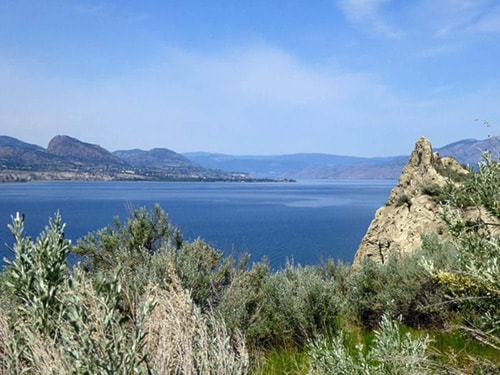Okanagan Lake is filled to the brim, most of B.C. is already in a level 2 drought and the first wave of water restrictions have been announced.
These seemingly discordant realities are all part of 琉璃神社's new normal.
"Climate scientists have been telling us this would happen for more than a decade," said Anna Warwick Sears, executive director of the Okanagan Water Basin Board.
"They did a bunch of climate modelling and it said we might have the same precipitation as we've had historically, but we will get more rain than snow鈥nd even if (precipitation) is in the form of snow it will melt sooner and we will have a longer, hotter summer."
Current numbers from the River Forecast Centre show a peak snowpack of 135 per cent of normal in the Okanagan this winter. As of June 1 it was down to 26 per cent of normal, melting faster than usual due to a stretch of record-breaking hot days.
"Those aren't just patterns in the Okanagan," said Sears. "That's the big pattern across the province."
Trouble is, the system isn't set up to accommodate more rain than snow.
As the snow melts and water rushes through streams and rivers, the perception of abundance is created. But it's short-lived, given the heat and continual demand on water purveyors that pull H20 from a variety of sources.
"The critical point is when you go completely onto storage," said Sears.
"More is going out of the reservoir than what is going into to it. That's a transition that happens every summer in the Okanagan and it's happening earlier each year."
One might think that building a bigger storage reservoir would help stretch out the water supply, but Sears said that's not easily done.
"It's difficult to expand the storage because it takes many years," she said. "Then there are other concerns the ministries have about dam safety鈥 reservoir is basically a big lake, so there's a lot to take into consideration."
The easiest way forward is simply conservation.
"The cheapest, purest possible source of water is what we get from not wasting it," said Sears.
Okanagan residents, she said, are getting better at that.
"We're seeing a slow change in systems throughout the valley," she said. "Farmers are working to update irrigation systems. Historically there have been big grant programs to do that, although we haven't seen any for a few years. It's a priority. Because agriculture needs so much water it makes a big difference if they have more water-efficient systems."
Water metering systems have also been expanded, which makes users more conscientious.
The Okanagan Water Basin Board has also seen a gradual shift in people's attitudes resulting in many choosing drought-resistant xeriscaping, as opposed to lush green yards.
"It's a slow change, but I think when you have droughts, water shortages and dry periods several years in a row, then that conversion happens more quickly," she said.



